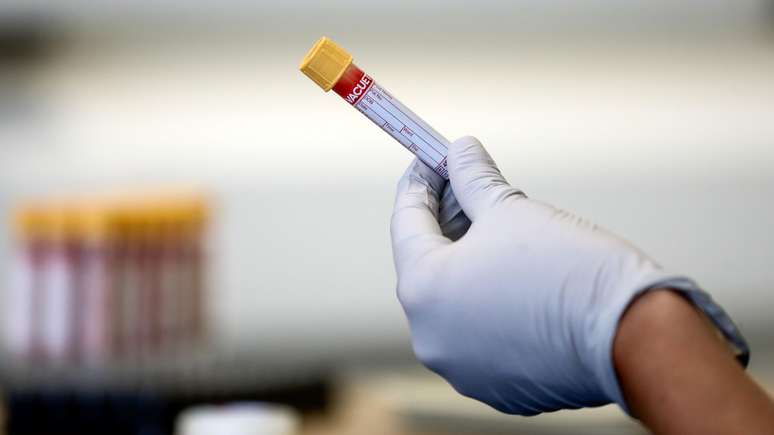Blood tests provide information on the status of biomarkers that indicate general or condition-specific health.
Your blood performs numerous functions to maintain your health. To perform these functions, blood contains a multitude of components, including red blood cells that carry oxygen, nutrients, and hormones; white blood cells that remove waste and support the immune system; temperature-regulating plasma; and platelets which help with clotting.
Numerous molecules formed as by-products of normal biochemical functions are also present in the blood.
When these molecules indicate how cells respond to disease, injury, or stress, scientists typically call them biological markers or biomarkers.
Therefore, in a blood sample, biomarkers can represent a snapshot of the body’s current biochemical state, and their analysis can provide information on various aspects of health.
As a toxicologist I study the effects of drugs and toxic agents on human health. As part of my work, I rely on various health-related biomarkers, many of which are measured using conventional blood tests.
Understanding what common blood tests aim to measure can help you better interpret your results. If you have the results of a recent blood test on hand, go ahead.

Normal blood test levels
Depending on the laboratory that analyzed the blood sample, the results may be divided into individual tests or collections of related tests, called panels.
The results of these panels help the healthcare provider recommend preventive care, detect potential diseases and monitor the patient’s health condition.
For each of the tests listed in the report, there will typically be a number corresponding to the test result and a reference range. This range essentially indicates the upper and lower limits within which the test results of most healthy people are expected to fall.
Sometimes called a normal range, a reference range is based on statistical analyzes of tests on a large number of patients in a reference population.
Normal levels of some biomarkers are expected to vary within a group of people, depending on age, gender, ethnicity, and other characteristics.
Therefore, reference populations are created from people with specific characteristics.
For example, a reference population might include all women or all children.
A patient’s test results can then be appropriately compared to the results of the reference population in which they best fit.
Reference intervals vary from laboratory to laboratory because each may use different analysis methods or reference populations.
This means that you may not be able to compare your results with reference ranges from other laboratories.
To determine how your test results compare to the normal range, you should check the reference range listed by the laboratory where the tests were performed.
If you have results for a particular test from tests performed at different labs, your doctor will likely focus on the trends of the tests relative to their reference ranges rather than the numerical results themselves.
Interpret blood test results
There are several blood tests designed to test specific aspects of health. This includes panels that analyze cellular components of blood, biomarkers of kidney and liver function, among others.
Instead of describing each panel, let’s look at a hypothetical case study that requires using multiple panels to diagnose a disease.
In this case the patient goes to the doctor complaining of fatigue that has lasted for months. Numerous factors and disorders can cause prolonged or chronic fatigue.
Based on the physical examination, other symptoms, and medical history, the doctor suspects that the patient may have one of the following symptoms: anemia, underactive thyroid, or diabetes.

Anemia is a condition that results in a reduction in the blood’s ability to transport oxygen. This is the result of lower-than-normal levels of red blood cells or a decrease in the quantity or quality of hemoglobin, the protein that allows these cells to carry oxygen.
A complete blood count panel measures the various components of the blood to provide a complete view of the cells that make it up.
Low values of red blood cell count, or RBC, hemoglobin, or Hb, and hematocrit, or HCT, would indicate that the patient suffers from anemia.
Hypothyroidism is a disorder in which the thyroid gland does not produce enough thyroid hormones. This includes thyroid-stimulating hormone, or TSH, which stimulates the thyroid gland to release two other hormones: triiodothyronine, or T3, and thyroxine, or T4. The thyroid function panel measures the levels of these hormones to evaluate thyroid-related health.
Diabetes is a disease that occurs when blood sugar levels are too high.
An excess of glucose molecules in the bloodstream can bind to hemoglobin and form what is called glycated hemoglobin, or HbA1c.
A hemoglobin A1c test measures the percentage of HbA1c present in relation to the total amount of hemoglobin. This provides a history of blood glucose levels for a period of approximately three months prior to the test.
Providing additional information is the basic metabolic panel, or BMP, which measures the amount of various substances in the blood. Included:
- Glucose, a type of sugar that provides energy to the body and brain. Relevant for diabetes, BMP measures blood glucose levels at the time of the test.
- Calcium, an essential mineral for the correct functioning of nerves, muscles and heart.
- Creatinine, a byproduct of muscle activity.
- Blood urea nitrogen, also called urea, the amount of urea waste that the kidneys help remove from the blood. They indicate the state of a person’s metabolism, kidney health and electrolyte balance.
With the results of each of these panels, the healthcare provider will evaluate the patient’s values against his or her reference ranges and determine which condition he or she is most likely to have.
Understanding the purpose of blood tests and how to interpret them can help patients form partnerships with their healthcare providers and become more informed about their health.
**This article was published on The Conversation and reproduced here under a Creative Commons license. Click here to read the original English version.
Source: Terra
Ben Stock is a lifestyle journalist and author at Gossipify. He writes about topics such as health, wellness, travel, food and home decor. He provides practical advice and inspiration to improve well-being, keeps readers up to date with latest lifestyle news and trends, known for his engaging writing style, in-depth analysis and unique perspectives.








